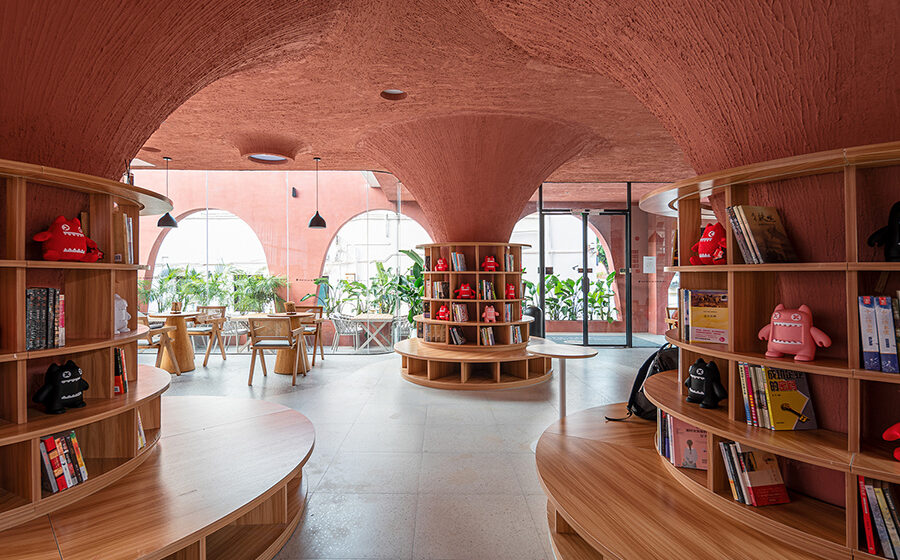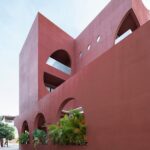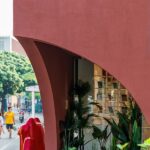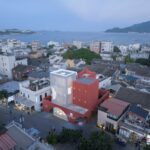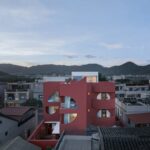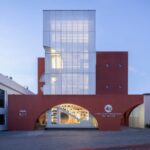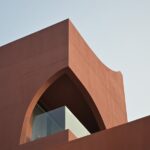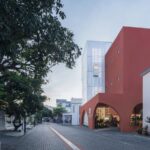In Shenzhen, China, the Shenzhen Reef Library stands as a testament to innovative architectural design by Wildurban Architects. Situated in Jiaochangwei, the only village along the Dapeng Peninsula’s coastline, this project seeks to transform a once-tranquil seaside village into a dynamic and diverse public space.
Design Concept
The initial design concept of the Shenzhen Reef Library aimed to create a vibrant and multifaceted public space within a tightly enclosed site. To achieve this, the architects divided the site using a nine-square grid and strategically contracted the building’s four corners inward, creating void spaces that serve as courtyards with distinct characteristics. These courtyards not only enhance the indoor landscape but also facilitate a seamless transition between indoor and outdoor spaces.

Geometric Sequences
By introducing new arched walls, a clear geometric sequence along the street is established, contributing to the spatial coherence of the building. This design strategy, known as “retreat to advance,” gradually establishes the spatial relationship and sense of scale within the building through a series of retreating actions.
Inspiration from Nature
The Shenzhen Reef Library draws inspiration from the unique geological feature of the Dapeng Peninsula: the red reefs left by ancient volcanic relics. These red reefs are prominently featured in the project’s facade and interior, creating a strong connection between humanity and nature. The use of square volumes and curved openings generates a vivid architectural language, while thick red walls form the solid body of the building.
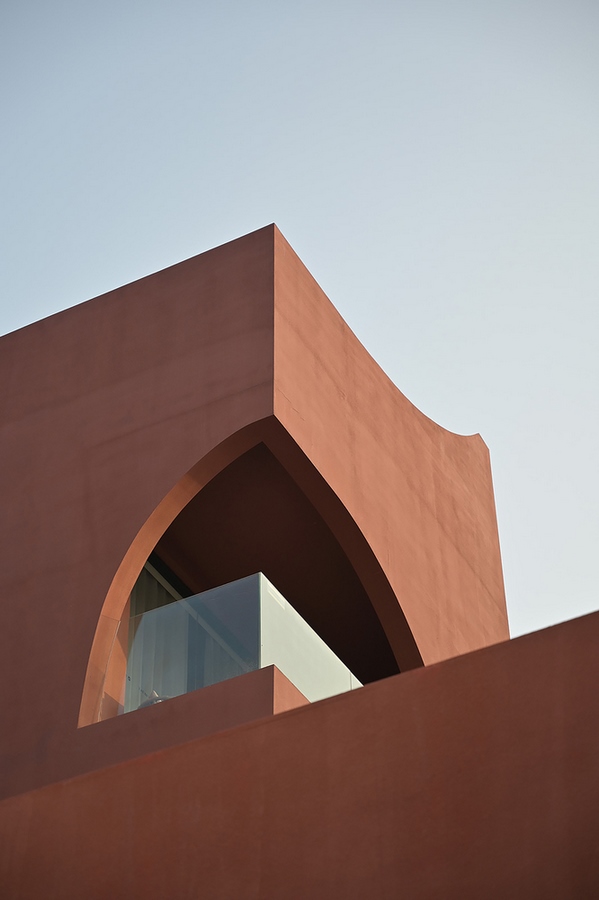
Contrast and Harmony
A striking contrast is achieved between the red block, representing the solid body of the building, and the white book tower, symbolizing the public space. The ground floor features a red cave space with reef-like interiors, seamlessly integrated with curved bookshelves. The flowing and undulating curve of the parapet roof echoes the surrounding mountains and sea, enhancing the building’s connection to its natural context.
Redefining Community Spaces
The Shenzhen Reef Library redefines the significance of community spaces within the coastal village of Jiaochangwei. Beyond its function as a library, this building serves as a catalyst for local renewal, promoting interaction between humans and space. It aspires to create a comprehensive and peaceful environment, fostering a sense of community and belonging among its inhabitants.
Conclusion
With its innovative design concepts and deep-rooted connection to nature, the Shenzhen Reef Library represents a paradigm shift in the design of community spaces. Through thoughtful integration of architectural elements and a commitment to enhancing the local environment, this project sets a new standard for urban development in coastal villages.

